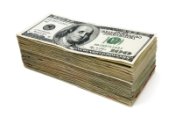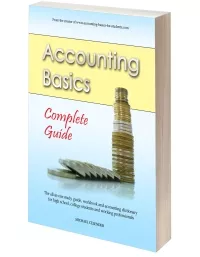Journal for Partial Payment and Trade-In of Vehicle incl. Depreciation
by Anonymous
Question:
Paid $12,500 for a car which cost $20,000 with the garage accepting $7,500 in part exchange. The old car cost $22,000 and had depreciated by $5,000. What are the journal entries?


Solution:
First up, if you don't really know what depreciation is or how it works then this question and solution will be too difficult for you at this stage. Depreciation is not really covered on this site but I do go over it in detail in my book Accounting Basics: Complete Guide. You can find detailed explanations of depreciation in the book, as well as numerous questions and exercises to fully test you on the topic.Full Journal Entry:
Here's the full journal entry for the vehicle trade-in (explanations below):Dr Vehicle (new car)........................$20,000
Dr Accumulated depreciation.......$5,000
Dr Loss on exchange.....................$9,500 ($22,000 - $5,000 + $12,500 - $20,000)
Cr Vehicle (old car - cost price)..............................$22,000
Cr Bank...............................................................$12,500
Looks complicated? Let's break it down.
The way I approach a question like this is to work out the individual entries for:
- Getting rid of the old asset,
- Acquiring the new one,
- Any cash paid
1. Old Vehicle
 As a first step, let's take a look at the old car. It's original cost was $22,000. This original purchase amount never changes in this account - you bought it for $22,000, the cost 5 years later is still $22,000. And now, we need to remove this from our records.
As a first step, let's take a look at the old car. It's original cost was $22,000. This original purchase amount never changes in this account - you bought it for $22,000, the cost 5 years later is still $22,000. And now, we need to remove this from our records.This is an asset account, meaning that it is recorded on the debit side. If we want to get rid of it now we will reverse this by crediting it.
So Credit Vehicle (old car) - $22,000.
You've also got to remove the second part of the old asset's records - the accumulated depreciation. Remember, the accumulated depreciation account is a sort of negative side of
This negative part of the asset occurs on the credit side. So to get rid of it we debit the $5,000 accumulated depreciation.

2. New Vehicle
Of course, we are receiving the new car. And its value is $20,000. So we debit the vehicle account with $20,000.3. Cash Paid
 Another easy step is to record the cash paid. Cash is also an asset. It increases on the left side (debit) and decreases on the right (credit). So you simply credit your bank with $12,500.
Another easy step is to record the cash paid. Cash is also an asset. It increases on the left side (debit) and decreases on the right (credit). So you simply credit your bank with $12,500.4. Profit or Loss on Trade-In
 Only after we've entered all these basic elements of the transaction, do we move on to our final calculation: working out the profit or loss on this whole exchange.
Only after we've entered all these basic elements of the transaction, do we move on to our final calculation: working out the profit or loss on this whole exchange.Since we're trading in a car worth $17,000 ($22,000 - $5,000) AND we're paying $12,500, we are giving over a total value of $29,500.
What are we getting in return? A new car worth $20,000.
So, we're actually losing out in this case. And that loss amounts to $9,500 ($29,500 - $20,000).
Remember again - always leave the calculation of the profit and loss as the final step. Record all the other elements of the transactions first!
That's it! Hope this vehicle exchange question and answer helped you.
What do you think about the example above? Add a comment at the bottom of this page if you have any questions on this example or on trade-ins and similar transactions in general.
Good luck with your studies!
Best,
Michael Celender
FYI depreciation and accumulated depreciation are not really covered in detail on this website. Check out our official basic accounting books where you can find detailed but simple explanations as well as numerous exercises to test you fully on these topics.
Related tutorials and exercises:
- Tutorial on the Journal Entry for Purchasing an Asset
- Fixed Assets Question: Sale and Purchase
- Full Journal Entry Exercise including Depreciation
Click here for more Full Accounting Questions and Answers
Comments for Journal for Partial Payment and Trade-In of Vehicle incl. Depreciation
|
||
|
||
© Copyright 2009-2023 Michael Celender. All Rights Reserved.
Click here for Privacy Policy.




